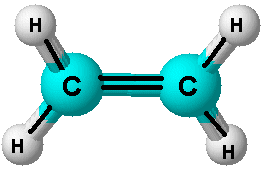Alkenes have a double bond of carbon-carbon due to which the physical properties are changed. These are unsaturated compounds of carbon. These are compounds of hydrocarbons and they are odorless and colorless in nature. In the alkene group, the first three members are gaseous in nature, the next fourteen are liquids and the remaining members are the solids. Alkenes are found in all the three phases of the solid, liquid, and gases at the room temperature.

Solubility
Generally, the alkenes are insoluble in the water as they are non-polar. In the non-polar solvents such as ligroin and benzene, they are completely soluble. Alkenes easily get dissolve in the organic solvents.
Dipole-dipole Interaction
The dipole-dipole interaction of the alkenes is weak as they have an electron attraction to the sp2 carbon.
Density and Structural Isomerism
The density of alkenes is less than the water. The phenomenon of structural isomerism is exhibited by the alkenes which have four or more than four numbers of carbon atoms. It means that two or more than two structural formulas can be withdrawn for each of the molecular formulae. Alkenes show the cis-trans isomerism as well.
Boiling Points
With an increase in the number of carbon atoms in the compounds, their boiling points are increased. By comparing the alkenes with the alkanes, it is found that both of them have almost similar boiling points, but the condition is if these compounds have the same carbon skeleton. The straight chain alkenes have more boiling points than the alkenes of the branched chain. The boiling points of the alkenes are strongly dependent on the chain length or the molecular mass. Boiling points is increased by an increase in the intermolecular mass. This is due to the reason that by an increase in the size of the molecule the intermolecular forces of the alkenes get much stronger.
Melting Points
The melting points of the alkenes are greatly dependent on the positioning of the molecules in the compounds. Their melting points are similar to that of the alkanes. However, the melting points of the cis-isomer molecules are low than the trans-isomers due to the packing of the molecules in the U- bending shape.
Polarity
Alkenes show less polarity, they are weekly polar, but their reactivity is slightly more than that of the alkanes. The π electrons are weakly held so they can be easily added or removed. Alkenes exhibit a more dipole moment than the alkanes. The polarity of alkenes is highly dependent on the functional group that is attached to the compounds in the chemical structure. The sp2 carbon is potentially much more electron withdrawing than the other orbitals which are sp3 hybridized, therefore, a weak dipole is created along with the carbon bond of the substituent weak alkene. A net molecular dipole is formed by the two individual dipoles. However, the dipoles cancel out each other in the trans-substituted alkenes. There is a net dipole in the cis-substituted alkenes, therefore, it contributes to the high boiling points in the cis-isomers rather than the trans-isomers.